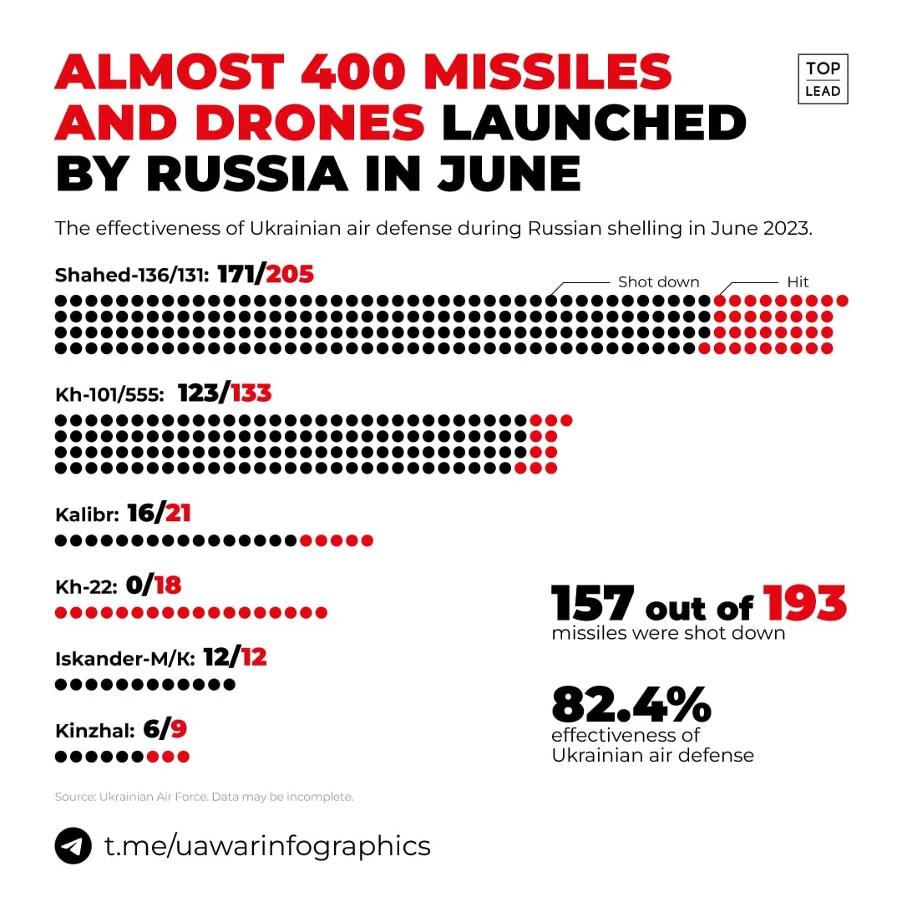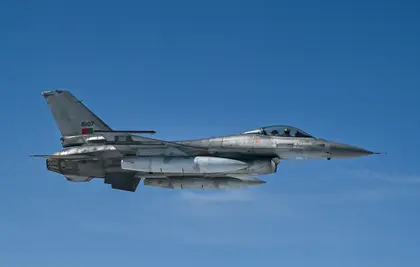In the last fortnight, some 20 Ukrainian civilians have been killed by Russian cruise missile attacks. Ukraine could have prevented or neutralized those attacks with the supply of a key item missing from its arsenal – the F-16 fighter jet.
Could the Russian missile attacks at Lviv and Kramatorsk been prevented?
JOIN US ON TELEGRAM
Follow our coverage of the war on the @Kyivpost_official.
In short, yes.
The F-16 is the most numerous fighter jet in the world and is used by 25 countries around the world. Among its many operational advantages, the F-16 gives an air force more capacity to defend against missiles, including the hypersonic and stealth cruise missiles Russia is using against Ukraine. Basically, the F-16 provides an air force with more breadth and depth.
F-16s could “push back” the area that the Russian VPK (air force) can safely operate in, and they could provide more cover of Ukraine’s terrain.
It is possible that F-16s could have helped either deter a Russian missile attack on Lviv and Kramatorsk, or been able to destroy in-coming enemy missiles in flight.
How can F-16s help defend against missiles?
By blocking them and blowing them up.
Because many of Russia’s cruise missiles are launched from Tu-22 jet bombers or Tu-92 prop bombers, Ukrainian F-16s would be a substantial deterrent or “forward defense” to airborne missiles. Russian bombers would not be able to operate as freely as they do now over the Black Sea where many missiles are launched from. F-16s could be used on combat air patrols to deter launches from outside Ukrainian and Russian airspace.

Thinking Out Loud – Where We’re at, What’s at Stake, and What Ronald Would Have Said
Secondly, refitted F-16s can more readily detect, hunt and destroy cruise missiles that are already airborne. This is crucial because many of the missiles used by Russia – such as the hypersonic Kinzhal and “low and slow” Kh-101 – are specifically designed to avoid radar and infrared detection.
After an initial arc, hypersonic missiles dive down and fly at a much faster speed than conventional ballistic missiles, which Ukrainian Patriot operators observed to be about 1,240 meters/second (about 3.6 times the speed of sound). They follow what is known as a low atmospheric-ballistic trajectory. That means that by the time a radar-based missile defense system clocks them, they are already so close to their target that in many cases, it is too late to intercept them. On top of that, hypersonic missiles can change direction mid-flight in their ballistic arc, making air defense targeting in the midcourse difficult.
“Low and slow” missiles similarly hug terrain and alter their flight path but use stealth rather than speed to avert detection.
F-16s with advanced radar can overcome this problem by locating missiles while on patrol. Their new radar system gives the F-16 “downward large-area scanning ability.”
Also, F-16s would extend Ukraine’s system of defense based on surface-to-air missiles such as the Patriot. Quite reasonably, Ukraine has to deploy its limited number of launch stations to the locations of the highest priority. This can leave gaps in Ukraine’s air defenses, including in terms of smaller cities, such as Lviv and Kramatorsk.
Is Russia exploiting Ukraine’s lack of fighter aircraft?
Without a doubt.
During the lead-up to Ukraine’s offensive in May and during its start in June, Russia increased the rate of its missile attacks on Ukrainian cities simply because it could.
While US Patriot and other modern anti-missile systems have greatly increased Ukraine’s capability, Russia is exploiting gaps in coverage – both geographically by targeting smaller cities and tactically by using more combinations of hypersonic and ‘low and slow’ missiles that can better avoid current radar systems, while also using cheap Iranian drones as flying decoys.
During June, Ukraine shot down 82 percent of Russian missiles and drones, whereas in June it shot down nearly 90 percent. This is arguably due to the Russian tactical adjustment, e.g., different combinations of different missiles and drones from various platforms and various directions to open gaps in Ukraine’s defense.
 What is needed to make F16s better missile hunters?
What is needed to make F16s better missile hunters?
One of the most significant upgrades that many F-16s have had over the course of their operational lives since the 1980s is the installation of the latest radar technology.
As the US prepares its F-16 fleet for the final third of its operational life (up to 2048), a key upgrade is the installation of the most sophisticated radar equipment that can deal with the modern reality of stealth fighters, next-generation cruise missiles and fast-evolving unmanned aerial vehicles (drones).
A major step in the F-16s’ evolution is the installation of powerful new AN/APG-83 Scalable Agile Beam Radars (SABR) to fit inside the nosecones of the planes.
The SABR boasts superior resolution, jam resistance and stealth versus adversary radars. It has a maximum theoretical range of 370 kilometers (200 nautical miles) and can also perform wide-area surface scans.
The US Air Force has ordered 372 APG-83s for $1 billion ($2.7 million each) to upgrade its F-16 squadrons. The new radars will also be installed on F-16s in Bahrain, Greece, Indonesia, Korea, Morocco, Singapore, and Taiwan.
What’s the latest on F-16s for Ukraine?
The short answer is that there’s still a way to go. Maybe, early 2024.
During the G7 summit in Japan in May, US President Joe Biden gave permission for other countries to deliver F-16s – manufactured by the US company Lockheed Martin – to Ukraine.
A “historic” decision, welcomed by Ukrainian President Zelensky, the delivery of these planes had thus far been blocked by Washington. If these deliveries become a reality, it would allow Kyiv to replenish its air combat capabilities, after the loss of about 60 of the roughly 100 combat aircraft it had at the beginning of the Russian invasion.
It remains to be seen who will supply Ukraine with F-16s. After the Americans with 936 aircraft, Turkey has the most F-16s (243 aircraft). Following them are Israel (224), Egypt (218), South Korea (167), Greece (153) and Taiwan (136 and 66 on order).
Together with the United States, these countries own three-quarters of the world’s F-16 fleet. Other European countries also have several dozen F-16s in stock, such as Belgium (52), Poland (48), Denmark (43) and the Netherlands (29).
Since the announcement, several countries have responded to President Zelensky’s call to build a “jet coalition” for Ukraine. The UK, Denmark, the Netherlands, Canada, Germany and others have all pledged to train Ukrainian pilots in F-16s and other Western aircraft. However, no training is believed to have yet started and Ukrainian officials have in the last week publicly expressed their strong concerns that “the schedule is slipping.”
Allowing for four to six months of training starting from August, the earliest conceivable timeframe for Ukraine to take possession of any actual jets, subject to them being promised and provided, is around early 2024.
You can also highlight the text and press Ctrl + Enter






